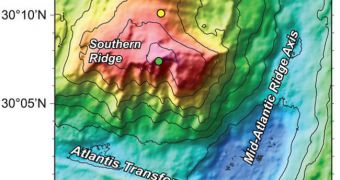According to a new investigation, it would appear that even the deepest layers of the ocean's crust are teeming with life in a way that researchers did not thought was possible. These areas reveal a large biodiversity of bacteria and other microorganisms, experts say.
The creatures living at these depths and under these special conditions are remarkable in themselves, the team behind the study says. Some of them can consume natural gas or hydrocarbons, whereas others can store carbon dioxide at the bottom of the sea.
What was really remarkable about these bacteria is that they managed to endure in water that was heated at temperatures nearing its boiling point. Regardless, the amount of biodiversity was not changed, and equally larger populations of microorganisms survive there.
Details of the new investigation appear in the latest issue of the open-access scientific journal PLoS One, a publication of the Public Library of Science.”This is a new ecosystem that almost no one has ever explored,” explains scientist Martin Fisk.
“We expected some bacterial forms, but the long list of biological functions that are taking place so deep beneath the Earth is surprising,” adds the expert, who is a professor at the Oregon State University College of Oceanic and Atmospheric Sciences.
The new findings are also important because oceanic crusts are currently occupying about 70 percent of the entire surface of the planet. In spite of its massive spread, this type of ecosystem has only been studied superficially.
Its biology is still a mystery to researchers, and this study was partially aimed at clearing some of the mysteries associated with how life develops and endures at these unforgiving locations. But the work did prove something useful.
For many years, experts avoided studying the deep oceanic crust because they believed that nothing was going on there. Now, they know that the amount of biodiversity at the location is more than worth the time and money that usually go into such investigations.
“These findings don’t offer any easy or simple solutions to some of the environmental issues that are of interest to us on Earth, such as greenhouse warming or oil spill pollution,” Fisk explains.
“However, they do indicate there’s a whole world of biological activity deep beneath the ocean that we don’t know much about, and we need to study,” the expert goes on to say.
The study was carried out with funding from the US National Science Foundation (NSF), the US Department of Energy (DOE), the Gordon and Betty Moore Foundation, and the Integrated Ocean Drilling Program, Science Blog reports.

 14 DAY TRIAL //
14 DAY TRIAL //